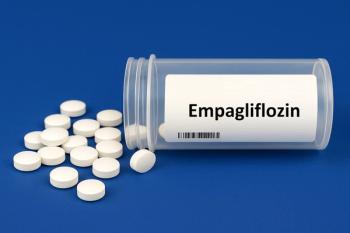
Pharmacy-Driven Probiotic Protocol Reduces Rates of C Diff Infection in an Inpatient Setting
Patients taking high-risk antibiotics and a probiotic capsule had a lower risk of healthcare-associated C diff infections.
Multiple antibiotic use can compound the risk of developing Clostridium difficile infection in a hospital setting. Efforts to minimize these risks have focused on 2 strategies: first, minimizing exposure to pathogens and second, minimizing infection susceptibility. Probiotics may, according to research published in Clinical Infectious Diseases,1 “offer another complimentary approach and aim to improve a patient’s defenses to [C diff infection].”
Beginning in 2017, one hospital in Montreal began administering a 3-strain Lactobacillus probiotic to adult inpatients taking antibiotics in an effort to lower rates of healthcare-associated C diff infections. Adult inpatients—including those in palliative and intensive care—who were prescribed 2 or more days of antibiotics received the probiotic daily within the first 24 hours of antibiotic use; those aged 49 or younger took 1 capsule, while those aged 50 or older took 2 capsules. Probiotic capsules included Lactobacillus acidophilus CLI285, Lacticaseibacillus (Lactobacillus) casei LBC80R, and Lacticaseibacillus (Lactobacillus) rhamnosus CLR2 (Bio-K+ 50 Billion) for the duration of their antibiotic treatment course and for 5 days after antibiotic treatment was concluded.
Between 2016 and 2019, electronic pharmacy records were evaluated for all antibiotic or probiotic prescriptions administered to adult inpatients. Those who had 3 or more loose stools per day, or who were demonstrating signs of possible C diff infection were asked to provide stool samples.
All health care-associated C diff infections that occurred more than 48 hours after hospital admission, or within 4 weeks of hospital discharge were reported to a provincial surveillance program. Infection recurrence was defined as clinical symptoms of C diff emerging within 8 weeks of discharge.
A total of 13,922 electronic pharmacy records where antibiotics were prescribed were identified, for a total of 4383 unique patients over a 12-month observation period and 6079 patients over an 18-month intervention period (aged ≥70 n=2142 and 2995 during each period, respectively). During the intervention period, quinolones were prescribed less frequently compared with the observation period (odds ratio [OR], 0.59), while an opposite trend was noted for third generation cephalosporins (OR, 2.1).
Also noted during the intervention period was a higher number of antibiotics prescribed per visit: 1.98 vs 1.94 (P =.009). Investigators also saw a higher proportion of patients taking an antibiotic that “historically poses a high risk for development of [C diff infection] during the intervention.”
During the intervention period, hospital-wide health care-associated C diff infection rate was “significantly lower” compared with the observation period (5.2 vs 8.6 cases per 10,000 patient-days, respectively). The proportion of infections with recurrences was stable (19% vs 16% during the observation and intervention periods, respectively), and a smaller proportion of patients treated with probiotics experienced recurrences (13% vs 26% during the observation period).
During the intervention period, the hospital pharmacy purchased and dispensed 122,0000 probiotic capsules to 4543 eligible adult patients for 70% of hospitalizations. These capsules were “generally well tolerated,” with no cases of Lactobacillus bacteremia following probiotic use.
Investigators noted a potential selection bias “toward using the probiotic in older adults and those with an increased antibiotic burden.” A majority of those who received the probiotic (54%) were 70 or older, and were given probiotics more frequently (OR, 2.0; 95% CI, 1.8-2.3). Probiotics were also administered more frequently in patients using quinolones, third-generation cephalosporin, or carbapenems. These patients also received more antibiotics per vist compared with those who did not receive the probiotic.
Incidences of health care-associated C diff infections in patients taking antibiotics decreased significantly during the intervention vs the observation period (0.9% vs 1.5%, respectively). When riskier antibiotic courses were prescribed, those in the probiotic group “fared better."
“We found that using a pharmacy-driven protocol made it feasible to safely implement this probiotic as an adjunct to antibiotics,” the researchers wrote. “The hospital-wide rate of [health care-associated C diff infection] improved by 39% during the intervention relative to the observation period, consistent with findings from other hospitals implementing this probiotic.”
“The experience…confirms the effectiveness of this probiotic preparation for the primary prevention of [health care-associated C diff infection], as described in multiple controlled, clinical studies,” they concluded.
Disclosures: Multiple authors report a relationship with Bio-K Plus International.
Reference
- Maziade P-J, Ship N, Sniffen JC, Goldstien EJC.
Enhanced Clostridioides difficile infection prevention with a pharmacy-controlled policy that adds a 3-strain Lactobacillus probiotic concomitantly to antibiotic therapy. Clin Infect Dis. 2021;73(8):1524-1527. doi:10.1093/cid/ciab414
Newsletter
Pharmacy practice is always changing. Stay ahead of the curve with the Drug Topics newsletter and get the latest drug information, industry trends, and patient care tips.















































































































